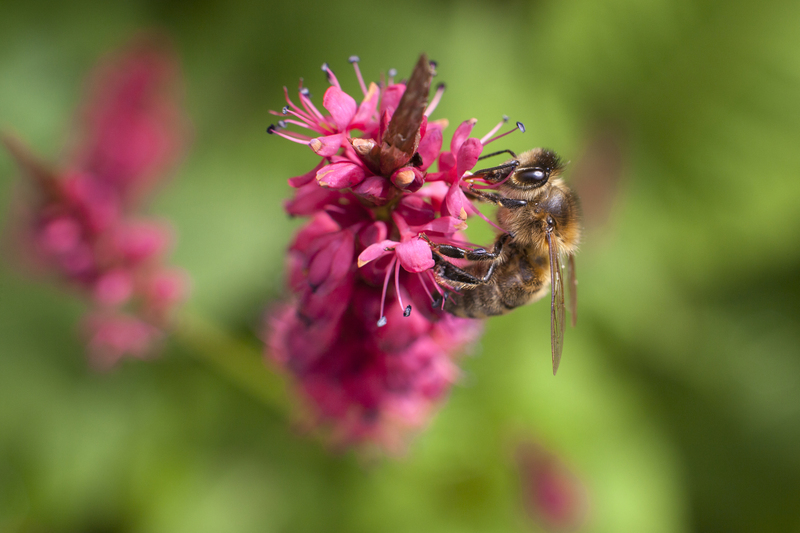Effective Ways to Shield Your Garden Plants from Snow and Ice
Posted on 04/06/2025
Effective Ways to Shield Your Garden Plants from Snow and Ice
Winter poses a significant threat to delicate and hardy garden plants alike. Freezing temperatures, ice, and heavy snow can damage roots, break branches, and even kill the plants you've spent months nurturing. Fortunately, shielding your garden plants from snow and ice is possible with the right strategies. Whether you're an experienced horticulturist or a beginner, understanding and implementing proper protection techniques will help ensure your garden comes through winter alive and ready for spring growth.
Why Winter Protection is Essential for Garden Plants
Ice, frost, and snow cause multiple issues for garden flora:
- Weight damage: Accumulated snow and ice can break delicate branches and crush small plants.
- Freeze damage: Freezing temperatures can rupture plant cells, causing blackened foliage and stunted growth.
- Root injury: Sudden temperature drops can penetrate the soil, damaging plant roots and bulbs.
- Moisture loss: Cold winds and ice can dehydrate evergreens and expose roots to desiccation.
To prevent these issues, you need effective strategies for protecting your plants from the ravages of a harsh winter.

Assessing Plant Vulnerability to Cold Weather
Not all plants need the same type or level of winter protection. When determining how to shield your garden plants from snow and ice, consider the following:
- Plant hardiness: Check your area's USDA Hardiness Zone and compare it to your plants' ratings.
- Exposure: Plants in open, windy areas suffer more from cold and ice than those in sheltered spots.
- New plantings: Recently transplanted or young plants are less established and more vulnerable.
- Evergreen status: Evergreens often need more moisture protection in winter than deciduous plants.
Best Techniques for Shielding Garden Plants from Snow and Ice
Here are practical methods to protect your garden from winter's harsh conditions:
1. Mulching for Insulation
Applying mulch is among the most effective ways to shield garden plants from freezing weather. Mulch acts as a blanket, stabilizing soil temperatures and retaining moisture.
- Apply a 2-4 inch layer of organic mulch (e.g., straw, shredded leaves, bark) around plant bases.
- Keep mulch a few inches away from stems to prevent rotting.
- Mulching works especially well for perennials, root crops, and young shrubs.
2. Building Protective Barriers
Create simple yet sturdy barriers to defend against harsh winds, ice, and snow accumulation:
- Burlap screens: Drive stakes into the ground and staple burlap to create windbreaks around vulnerable plants.
- Wire cages: Surround shrubs or small trees with wire cages, then wrap with burlap or frost cloths for insulation and protection.
- A-frame shelters: Place wooden planks or boards in an A-shape over rows of low-lying plants to shed snow and redistribute weight.
Barriers not only block wind and frost but also prevent branches from breaking under snow's weight.
3. Using Plant Covers and Cloches
For the ultimate garden plant protection against ice and snow, consider physical covers:
- Frost blankets and horticultural fleece: Lightweight, breathable fabrics that trap warmth and shield against frost.
- Cloche domes: Transparent or semi-transparent covers (glass or plastic) placed over individual plants for a mini-greenhouse effect.
- Old sheets or blankets: In a pinch, drape these materials over plants at night during particularly harsh cold spells.
Remove fabric covers during the day to prevent overheating and return air circulation.
4. Pruning to Reduce Breakage
Prune trees and shrubs in late fall to get rid of weak, damaged, or crossing branches which are susceptible to snow and ice accumulation. Good pruning:
- Reduces the chance of branches snapping under heavy snow.
- Improves air flow and overall plant health.
- Directs energy to stronger, healthier parts of the plant.
Always sterilize pruning tools to prevent disease spread.
5. Strategic Watering
Well-hydrated plants are better equipped to withstand winter damage:
- Water deeply before the ground freezes, especially for evergreens and newly planted specimens.
- Avoid excessive watering, which could cause root rot as water sits in cold, soggy soil.
- Consider an anti-desiccant spray for evergreens to retain moisture.
6. Snow Removal and Management
Heavy snow smothers low and medium-height plants, bending or breaking branches. Safely manage snow buildup by:
- Gently brushing snow off branches with a broom (always working upward to prevent more breakage).
- Letting ice melt naturally if branches are frozen - forcing ice off can cause further damage.
- Clearing pathways and garden beds with care, avoiding piling snow directly onto flower beds or over shrubs.
If in doubt, less is often more. Foliage may spring back on its own once ice melts.
Special Considerations for Container and Raised Bed Gardens
Plants in pots or raised beds are more at risk from cold, as their roots freeze more quickly. Protect them by:
- Moving vulnerable containers: Place pots against the south-facing wall of your house or in a sheltered spot, or move them indoors if possible.
- Insulating pots: Wrap containers with layers of bubble wrap, burlap, or even old blankets.
- Grouping pots together: Cluster pots to create a microclimate and reduce cold exposure.
- Mulching raised beds: Apply a thick layer of mulch to insulate the soil and roots.
Plants That Need the Most Protection from Snow and Ice
Certain garden plants are especially susceptible to damage from winter elements. Examples include:
- Tender perennials: Such as dahlias, cannas, and begonias.
- Budding shrubs: Like hydrangeas and camellias, which set flower buds in fall.
- Young trees: Thin-barked or recently planted saplings.
- Tropical and subtropical species: Bananas, citrus, or palms in non-native climates.
- Evergreen shrubs: Boxwoods and rhododendrons that can suffer winter burn from wind and ice.
Consider removing bulbs or tubers of non-hardy species and storing them indoors until spring.
Organic and Eco-Friendly Solutions for Winter Plant Protection
If you prefer to shield your garden from frost and snow in an environmentally responsible way, opt for:
- Natural mulches: Shredded leaves, straw, wood chips, compost.
- Burlap and cotton covers: Biodegradable and reusable instead of plastic sheets.
- Homemade compost: Adds nutrients and insulates roots.
- Living windbreaks: Hedges or fast-growing evergreen shrubs as natural barriers.
How to React After Snow or Ice Events
Despite your best efforts, winter weather sometimes causes damage. Here's how to minimize lasting harm and encourage recovery:
- Inspect plants after storms: Check for broken branches, split stems, and signs of root upheaval.
- Trim broken or damaged plant material: Prune cleanly to prevent disease and encourage healthy growth in spring.
- Re-firm uprooted plants: Gently press them back into the soil and add extra mulch.
- Remove excess ice naturally: Don't attempt to hack or pull frozen ice from branches as it may cause more damage.
Common Mistakes to Avoid When Protecting Plants from Winter Weather
- Using plastic directly on plants: Plastic traps moisture and can cause rot or overheating when the sun shines.
- Piling mulch against tree trunks: Can trap moisture and encourage rot or pests.
- Ignoring evergreens: Deciduous trees and shrubs are not the only ones at risk; evergreens need shielding too.
- Over-pruning: Pruning too late in the season encourages new growth that is vulnerable to frost.
- Watering the foliage late in the day: Can result in ice formation overnight, damaging leaves and stems.

Frequently Asked Questions About Protecting Plants from Snow and Ice
What is the best time to install winter protection for garden plants?
Install barriers, mulch, and covers in late fall or early winter, before the first hard frost but after the ground begins to cool. This timing ensures maximum protection from snow and ice throughout the entire cold season.
Can I use household items for plant protection?
Yes! Old sheets, blankets, and even cardboard boxes provide adequate short-term frost protection. For ongoing use, choose materials that allow air and moisture exchange, like burlap or horticultural fleece.
Should I remove mulch in spring?
As temperatures warm, gradually pull mulch back from the crown and base of plants to prevent rot and enable new growth.
Do all plants need to be covered every winter?
No, focus protection efforts on non-hardy, young, or especially valuable plants. Mature, regionally adapted species generally require less intervention.
Conclusion: Protecting Your Garden From the Challenges of Snow and Ice
Harsh winters need not spell disaster for your cherished plants. With an understanding of how to shield your garden plants from snow and ice, you can be proactive and keep your garden healthy and attractive year-round. From mulching and creating windbreaks to using covers, containers, and eco-friendly solutions, winter plant protection is both an art and a science.
Don't wait until icy weather arrives--prepare your garden now. Your plants will thank you with abundant blooms and vigorous growth in the spring. For ongoing tips and up-to-date gardening advice, bookmark our blog and revisit often!

